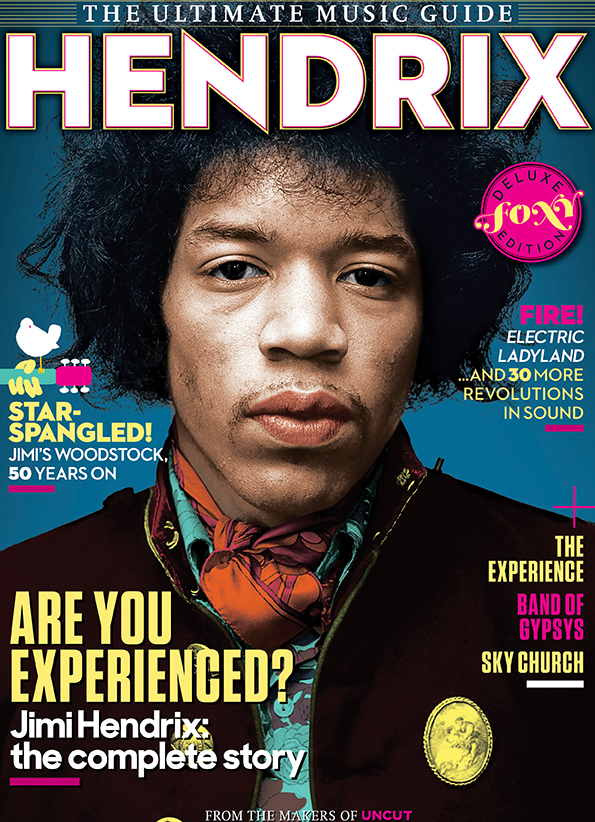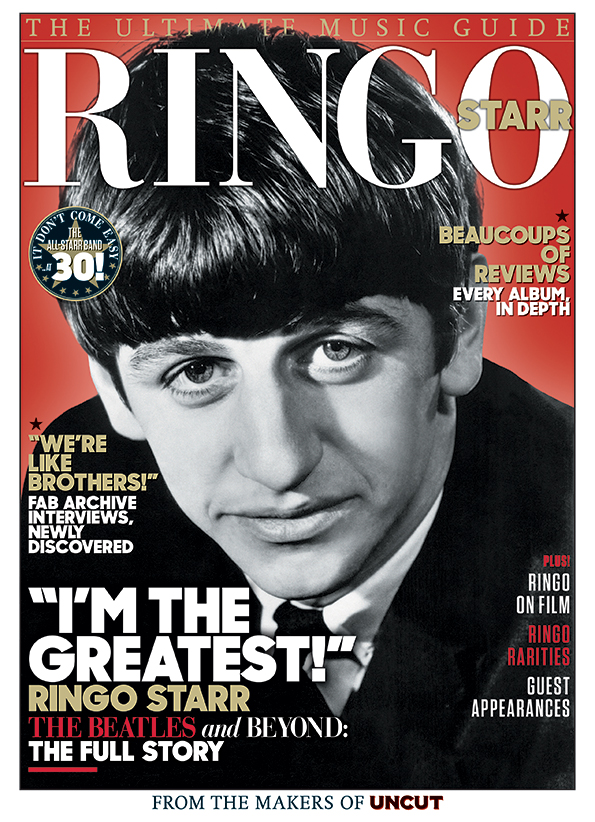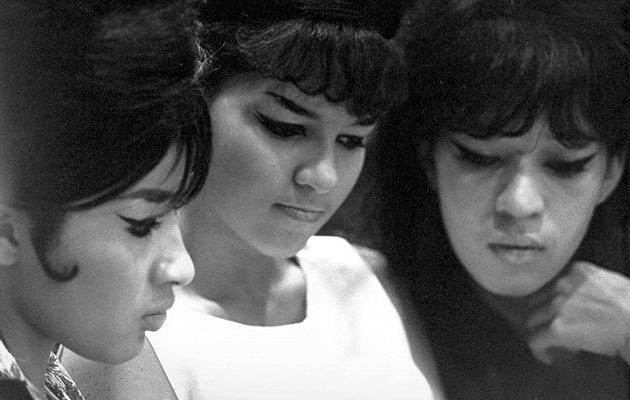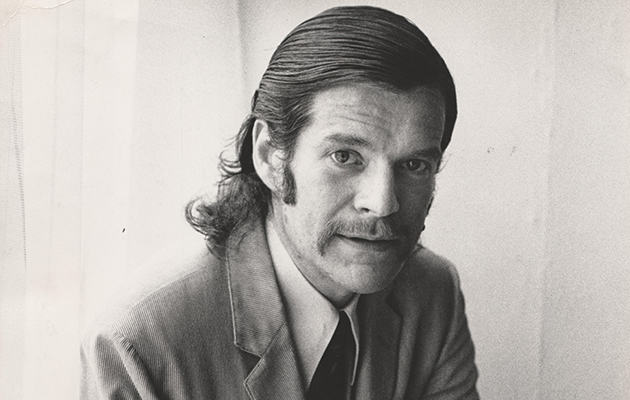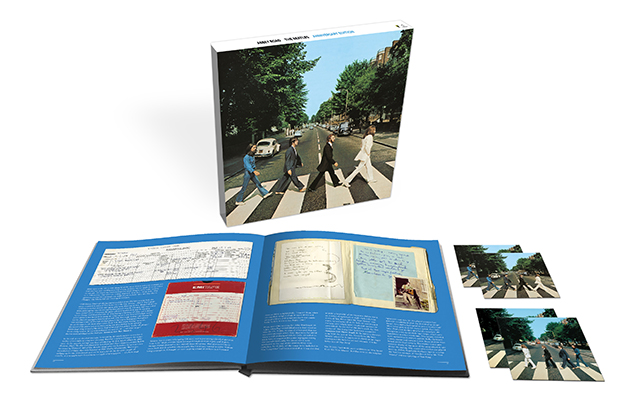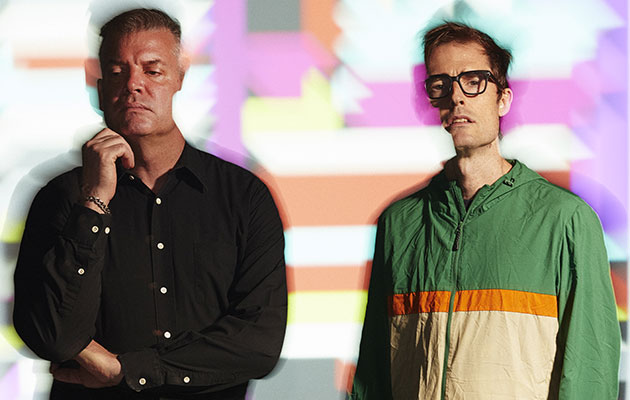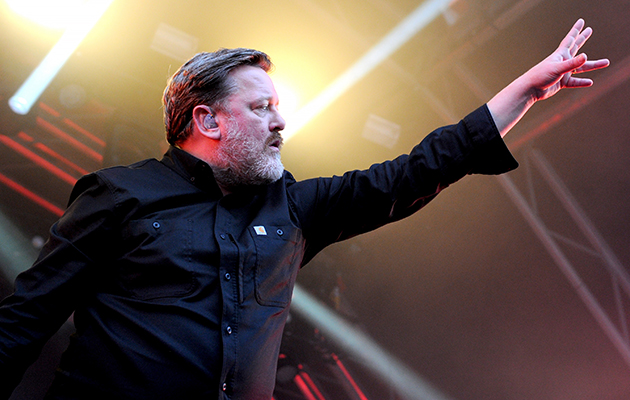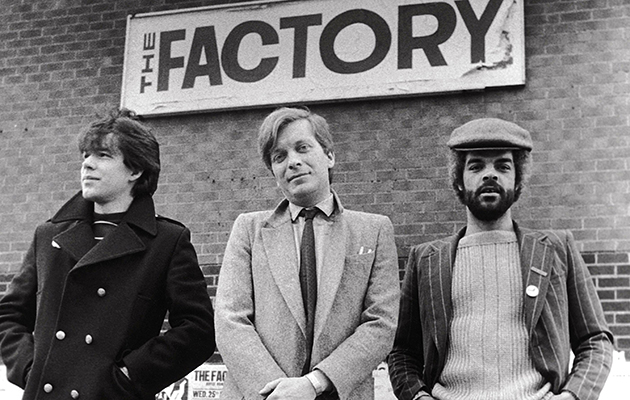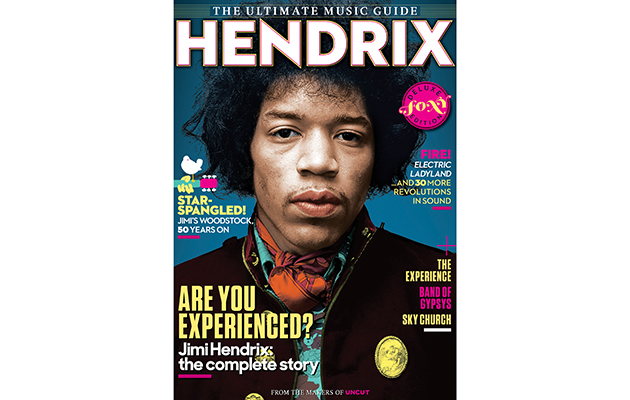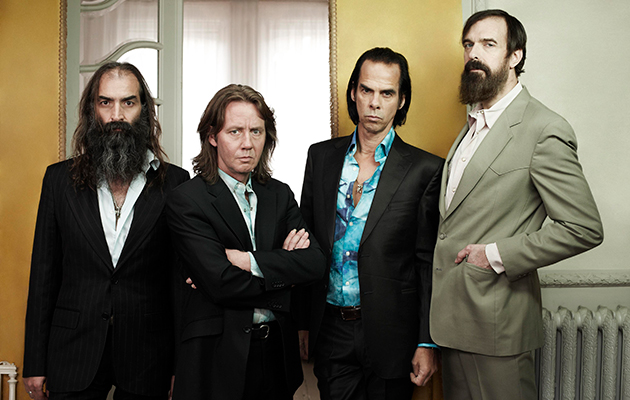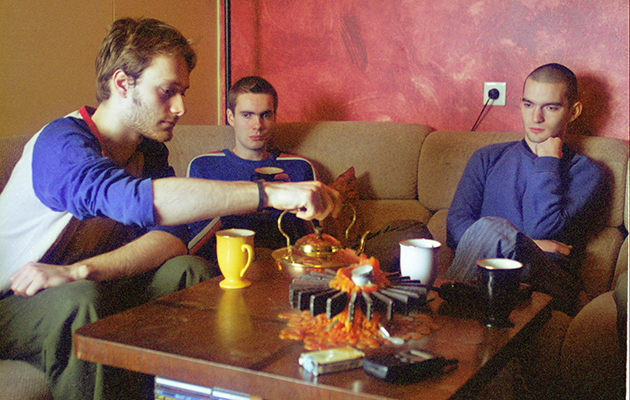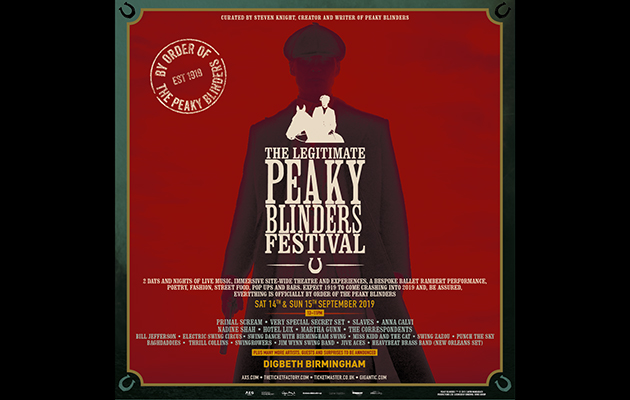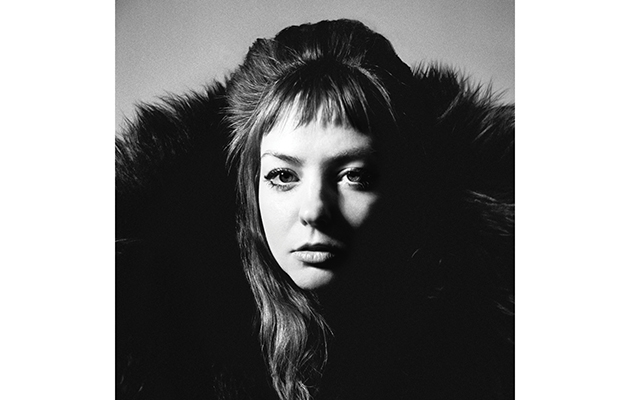Jimi Hendrix – Deluxe Ultimate Music Guide
Ringo Starr – Ultimate Music Guide
The making of The Ronettes’ “Be My Baby”: “It was pure everything”
“I was still living at home, and Phil Spector came over for a spaghetti dinner,” recalls Nino Tempo. “We went into the piano room after dinner and he said, ‘This is a song I’m gonna record.’ He played and sang it, and he looked up and said, ‘I know it doesn’t sound very good, but it will…’ I said, ‘It sounds terrible with you doing it, but ok!’”
The song the producer had played was “Be My Baby”, freshly penned by Jeff Barry, Ellie Greenwich and Spector, and destined to be recorded in summer 1963 as the Philles label debut by Spanish Harlem group The Ronettes. The Wrecking Crew cut the music, while backing vocals were provided by the Blossoms, Nino Tempo, Cher and Sonny Bono; but perhaps the most crucial element was the lead vocals of Ronnie Bennett, later Ronnie Spector.
“One day Phil calls,” she remembers, “and he says, ‘You have to be in California tomorrow. You have to sing the lead and then I can send for the other two [Ronettes] later.’ He met me at the airport, and the first place he took me was to Jack Nitzsche’s house, because Jack Nitzsche arranged all of his songs. Once Jack heard my voice he said, ‘Oh my God…’ I left and he started arranging ‘Be My Baby’, and a day or two after that I went in and recorded it.”
The other two Ronettes, Estelle Bennett and Nedra Talley, would never get the call, however. Instead, Phil Spector mastered his ‘wall of sound’ production for the track, utilising the echo chamber and tape echo at Santa Monica Boulevard’s Gold Star, his favourite studio. “He was a brilliant, brilliant kid,” says Tempo. “He had a sensitivity in those days for what would be a hit song. You could play 10 songs for him, and they might all be very good, but he’d always go to the one that had the best chance of being a hit. He had a sense of it.”
Released in August 1963, “Be My Baby” hit No 2 in the US and No 4 in the UK, entrancing the likes of The Beatles and The Beach Boys with its pioneering, rich production, indelible melody and Ronnie Spector’s coquettish vocals.
“The Beatles loved ‘Be My Baby’ and John Lennon loved my voice,” recalls Spector. “I remember we went to a nightclub one night and he said, ‘Ronnie, just sing me a little bit of “Be My Baby” in my ear…’ And I did, and I looked over and he had pretend-fainted! It was just so much fun, and so much energy then. It was pure rock’n’roll and pure everything.”
____________________________
RONNIE SPECTOR (lead vocals): The Peppermint Lounge was where we got discovered. We were standing in line with all the other people in Manhattan waiting to get in, and the manager comes out and – ’cause we dressed alike on purpose – he said, “Get in here, girls, you’re late, you’re late!” My sister starts to say, “Oh no no no, we were just standing in line with everyone else…” I said “Shut up! Let’s just go”, and we ran into the Peppermint Lounge and they put us right up on stage as dancers. We had done Bar Mitzvahs and sock hops, but that’s all. That’s how it all started.
NINO TEMPO (backing vocals): I met Phil Spector in New York on July 5, 1960 – we both had appointments with Leiber and Stoller. From that point on, Phil and I became very close friends. Shortly after, I was back in California and I was driving on Wilshire Boulevard and somebody blows a horn at me. Lo and behold, it’s Phil Spector. We pulled over, said hi. He said, “I’m going to Gold Star to record tonight, why don’t you come down? I could use an extra pair of ears.” That night I went down and he said, “Nino, why don’t you go out and play piano?” I said, “I don’t play that well, Phil.” He said, “You don’t have to – play the bottom end, Al De Lory will play the upper end.” We had four guys on two pianos! That’s the way he began to get the wall of sound.
DARLENE LOVE (backing vocals): By the early ’60s, the Blossoms would do the background for everybody, for all the Christmas stuff Phil Spector did, the Righteous Brothers – we were the background singers of Hollywood at the time.
Tubby Hayes – Grits, Beans And Greens: The Lost Fontana Studio Sessions 1969
Britain has produced plenty of great jazz musicians over the years – from Victor Feldman to Stan Tracey, from Courtney Pine to Andy Sheppard, from John McLaughlin to Shabaka Hutchings – all of whom have left a mark on the world. But few have been quite as celebrated as the saxophonist Tubby Hayes. Born in 1935 in London, he was one of that generation of musicians who learned his craft purely by listening to his American heroes – there were no jazz conservatoires or workshops where you could learn jazz theory – and ended up becoming so good that visiting American jazz royalty (Miles Davis, Cannonball Adderley, Dexter Gordon, Gerry Mulligan, Paul Desmond) would make a point of checking him out or sitting in with him when they came to London. Indeed, when Sonny Rollins and Benny Golson heard Tubby’s 1961 album Tubbs being played on an American radio station, they thought it was a new Coltrane release.
But in the depressing pattern common to the jazz genius, Hayes’ career was blighted by drug and alcohol abuse (he was one of the celebrity victims of the infamous drug squad detective Norman “Semolina” Pilcher), ill health, clinical depression, suicide attempts and a tempestuous relationship (in Tubby’s case with the American singer Joy Marshall). He’d be dead by 1973, aged only 38.
By that time, Hayes’ star had been on the wane, but not necessarily through his own fault. By the end of 1960s the revolutionary sound of hard bop was seen as a bit passé. On both sides of the Atlantic, jazz musicians were growing their hair, donning bell bottoms and playing over rock beats, often being encouraged to add the obligatory Bacharach or Beatles song to their repertoire. Tubby was no different – in 1969 Fontana’s head honcho Jack Baverstock commissioned an album credited to the Tubby Hayes Orchestra, featuring campy big-band versions of hits like “These Boots Are Made For Walking”, “Hey Jude” and “This Guy’s In Love With You” that matched the Austin Powers-ish flared collars and fulsome sideburns that Tubby was sporting at the time. Almost simultaneously – in one of those “one for you, one for me” agreements – Fontana also let Tubby record a straight-ahead jazz quartet album.
Unfortunately, in 1970, the only British “jazz” album that seemed to interest the world was Ringo Starr’s collection of standards, Sentimental Journey (on which Tubby features quite prominently as a session man). The Tubby Hayes Orchestra album flopped, and Fontana never even bothered releasing the quartet sessions, which languished in a German warehouse belonging to their parent company, Philips, untouched until last year.
Order the latest issue of Uncut online and have it sent to your home!
Fifty years on, the Grits, Beans And Greens album is something of a revelation, and one that shows Tubby Hayes at his imperious best. He is a garrulous performer, who plays fast and clean, with sparing vibrato, rattling out 16th-note phrases like a machine-gunner. He’s particularly good at using “triangles” – that old jazz player’s trick where, when playing an upwards scale, he plays a note either side of each rising note, to create this kaleidoscopic blur of noise. On a rare ballad, Duke Pearson’s “You Know I Care”, you hear him, for once, reducing the pace, adding some wobble and gliding between notes with the ease of a trombonist.
This was a time when British jazz musicians were still in a thrall to their American heroes. On the title track you can hear obvious nods to Art Blakey, Horace Silver and John Coltrane; while “Rumpus” sounds like all the best bits from Coltrane’s Giant Steps album knitted into a single seven-and-a-half-minute take. But where Coltrane’s tenor playing is steely and impassive, Tubby’s is filled with sly, puckish slurs, as if he’s playing with a grin on his face while dangling a lit roll-up from the side of his mouth.
Crucially, Grits, Beans And Greens sees Hayes fronting his finest quartet, one that features new recruit Spike Wells on drums. Wells was only 23 at the time and had just dropped out of a philosophy PhD at UCL, but he plays with the energy and verve of a seasoned hard bop veteran. He approaches each song as if performing one constant drum solo. His performance on the opening track, “For Members Only”, is a series of fills, flickers and polyrhythms that ensure he never plays the same four beats identically, interlocking perfectly with bassist Ron Mathewson.
This album comes in two packages – a five-track single CD and an 18-track double-CD package. The latter features multiple takes of each song as well as some “breakdowns” (interrupted takes) which are all a little excessive, but a huge advantage is hearing an incarnation of the Tubby Hayes Quartet where pianist Mick Pyne is substituted for the Irish guitarist Louis Stewart, one of the finest jazz players these islands ever produced. On a bossa-tinged version of the Cy Coleman standard “Where Am I Going”, Stewart is usually content to play smart, funky, Brazilian-style rhythm playing in an accompanying (or “comping”) role. But when Stewart switches to playing single-note solo runs, he is one of the few non-American frontline players who could hold a candle to Tubby – funky and hard grooving like Grant Green, but with the Bach-like complexity of Charlie Parker. Throughout the second take of the song, you can almost hear them urging each other on, taunting each other into more and more audacious territory. A real treat.
Ezra Furman – Twelve Nudes
If self-help is often all about positive thinking, Ezra Furman has another idea: that there might instead be fulfilment in the opposite, in airing one’s worst thoughts. Indeed, Twelve Nudes, the songwriter’s eighth album, explores this with a blistering spin through anxiety, pain and socio-political ills du jour – from the insurance industrial complex (“My Teeth Hurt”) to the Israeli-Palestinian conflict (“Rated R Crusaders”) and sexual assault (“Trauma”) – sung over scrappy rock anthems. When the world around us goes to shit, Furman suggests, screaming is sometimes the only sensible response.
In many ways, the LP is the 32-year-old singer, songwriter and guitarist’s foray into punk, not only in its musical and lyrical characteristics, but also in its unedited pulse. It’s the sonic equivalent of a hastily stretched canvas splattered with a palette of raw truth, the paint spread by physical reaction rather than intellectual concerns.
Recorded hurriedly in Oakland, California, the 11 songs unfold in less than 26 minutes. It’s an emotionally charged acknowledgement of the pain and suffering endured by the world’s most vulnerable, and an indictment of the abuses perpetrated by the most powerful.
“I want to be a force to revive the human spirit rather than crush it, to open possibilities rather than close them down,” he says. “Sometimes a passionate negativity is the best way to do that.”
Furman cites the late Jay Reatard as a bastion of cathartic negativity in music. The Memphis garage punk was beloved for broadcasting his internal darkness over cacophonous pop-infused punk. His songs “It Ain’t Gonna Save Me” and “Blood Visions” endure as emblems of his unique duality, and inspired the similarly matched quality of Twelve Nudes.
Order the latest issue of Uncut online and have it sent to your home!
Like Reatard, Furman gets quickly to the point: 80 per cent of the songs clock in at less than three minutes. One, at 56 seconds. And like Reatard, they screech with a lyrical wallop. “Nobody cares if you’re dying/’Til you’re dead,” he sings on “Transition From Nowhere To Nowhere”, an acoustic slow-burner that crescendos into an anthemic plea. “And if you’re really at the end of your rope/No you don’t take the night off/Too many demons to fight off,” he cries with urgency.
The three-minute track is an outlier among the harefooted lineup, but it stands out in its wit’s end posture, Furman’s alternate coos and howls chipping at the surface to reveal an utterly chilling core.
Twelve Nudes opens with “Calm Down aka I Should Not Be Alone”, an unhinged appeal for support amid the loneliness of our present dark days. The hightailing canticle transposes the rough-edged poetry of Springsteen onto the buoyant basslines and shouted backing vocals of pop-punk. It’s the album’s strongest track, and the catchiest channelling of worry this side of The Thermals. The Portland trio, along with Reatard, are prominent circles in the Venn diagram of musical identifiers for Twelve Nudes. Smaller orbs representing The Stooges, The Hold Steady and Springsteen are in there, too. But Furman’s distinctive shrieking, poetic phrasing and postmodernist perspective prevents the work from sounding overtly derivative. It instead borrows the best qualities of its forebears, and fuses them into something new.
This amalgam of heartland rock and punk continues through the album’s middle mark, “Thermometer”, a cavorting two-minute romp paying tribute to Furman’s saviour, rock’n’roll. Another love song, “I Wanna Be Your Girlfriend”, lightens the mood with cheeky Jonathan Richman-inspired narration. “My responsible friends are applying for jobs/But me, I was considering ditching Ezra and going by Esme/Baby, would you find that so odd?” he sings as less a tease and more a promise, over minimal, reverb-doused electric guitar.
The album concludes with a rhetorical question, “What Can You Do But Rock’n’Roll”. For a songwriter saved by music, it’s a lifesource; and for a society stripped of fundamental rights, it’s a last common thread. “You got no place you can go/You can’t go out/You can’t stay home,” he yowls in an expression of solidarity with the displaced and alienated, over boisterous drums, bass and guitar. In unleashing an indictment of the ills afflicting society, Furman not only creates a stunning protest record, he also stands as an example for action, channeling his power as a white male musician, with at least a modicum of visibility, to illuminate systemic abuse and the lives it plagues. Furman has no use for escapism. With Twelve Nudes, he’s exposed, but never still.
Bob Dylan releases new poem to be read out on the Isle of Wight
Bob Dylan has released a new poem to mark the 50th anniversary of his legendary appearance at the Isle of Wight Festival.
The poem will be read out in the Isle of Wight during the Million Dollar Bash — a new event to honour the anniversary of the 1969 festival which takes place on Saturday, August 31, reports Isle Of Wight County Press News.
Million Dollar Bash has been curated by Fairport Convention founder member, Ashley Hutchings, who assembled a band, Dylancentric, for the occasion.
“I got some very touching and personal messages from Bob,” says Hutchings. “Much of which must remain personal, but I can say he has passed to me a special poem, fittingly something he wrote about 50 years ago, for me to pass on to fans when we play at Million Dollar Bash.
“This is going to be a great celebration. I will read out Bob’s poem, a composition that is previously unpublished and unheard. I am looking forward to it.”
Order the latest issue of Uncut online and have it sent to your home!
Million Dollar Bash takes place at the County Showground on the Isle of Wight. The line-up also includes Richard Thompson, Pentangle, The Pretty Things‘ Dick Taylor and Phil May and Roger McGough. You can find more info here.
Read the complete tracklisting for The Beatles’ Abbey Road anniversary editions
The Beatles have announced plans for multiple anniversary editions of Abbey Road.
All these various packages will be released worldwide on September 27 by Apple Corps Ltd./Capitol/UMe.
“The Beatles recording journey had gone through many twists and turns, learning curves and thrilling rides. Here we were – still wondering at the magic of it all,” recalls Paul McCartney in his written foreword for Abbey Road’s anniversary edition packages.
Abbey Road’s Super Deluxe box set presents 40 tracks – including “The Long One” Trial Edit & Mix for the album’s epic Side 2 medley – on three CDs (stereo) and one Blu-ray disc (Dolby Atmos, 96kHz/24 bit high resolution stereo, and 96 kHz/24 bit DTS-HD Master Audio 5.1).
The four discs are housed in a slip-sleeved 12” by 12” 100-page hardbound book with McCartney’s foreword; Martin’s introduction; insightful, in-depth chapters written by Beatles historian, author, and radio producer Kevin Howlett covering the months preceding The Beatles’ Abbey Road sessions, track-by-track details and session notes, the cover art and photo shoot, and the album’s reception upon its release; plus an essay looking at the album’s influence through 50 years. The book is illustrated with rare and previously unpublished photographs, including many taken by Linda McCartney; never before published images of handwritten lyrics, sketches, and a George Martin score; Beatles correspondence, recording sheets, and tape boxes; and reproduced original print ads. The Super Deluxe digital audio collection presents all 40 tracks for download purchase and streaming in standard and MFiT formats, as well as in high resolution audio (96kHz/24 bit) for download.
Abbey Road’s limited edition Deluxe vinyl box set features all 40 tracks from the Super Deluxe collection on three 180-gram vinyl LPs. The album’s new stereo mix LP is packaged in a replicated sleeve, with the two Sessions LPs paired in their own jacket, presented with a four-page insert in a lift-top box.
The Deluxe 2CD set pairs the new stereo mix with versions taken from the session takes and demo recordings of its 17 songs, sequenced to match the album’s running order. The two discs are presented in a digipak with a 40-page booklet abridged from the Super Deluxe book.
The album’s new stereo mix is also available in 1CD and 180-gram 1LP vinyl packages, for digital download in standard and MFiT audio, and on a limited edition picture disc vinyl LP illustrated by the album’s front and back cover art images.
Abbey Road’s Super Deluxe and Deluxe vinyl box sets’ 23 session and demo recordings are presented in chronological order of their first recording dates.
Click here to listen to a stereo mix and studio demo of “Something”.
Order the latest issue of Uncut online and have it sent to your home!
Here’s the fulltracklisting…
SUPER DELUXE [3CD+1Blu-ray set; digital audio collection]
CD ONE: 2019 Stereo Mix
1. Come Together
2. Something
3. Maxwell’s Silver Hammer
4. Oh! Darling
5. Octopus’s Garden
6. I Want You (She’s So Heavy)
7. Here Comes The Sun
8. Because
9. You Never Give Me Your Money
10. Sun King
11. Mean Mr Mustard
12. Polythene Pam
13. She Came In Through The Bathroom Window
14. Golden Slumbers
15. Carry That Weight
16. The End
17. Her Majesty
CD TWO: Sessions
1. I Want You (She’s So Heavy) (Trident Recording Session & Reduction Mix)
2. Goodbye (Home Demo)
3. Something (Studio Demo)
4. The Ballad Of John And Yoko (Take 7)
5. Old Brown Shoe (Take 2)
6. Oh! Darling (Take 4)
7. Octopus’s Garden (Take 9)
8. You Never Give Me Your Money (Take 36)
9. Her Majesty (Takes 1–3)
10. Golden Slumbers/Carry That Weight (Takes 1–3 / Medley)
11. Here Comes The Sun (Take 9)
12. Maxwell’s Silver Hammer (Take 12)
CD THREE: Sessions
1. Come Together (Take 5)
2. The End (Take 3)
3. Come And Get It (Studio Demo)
4. Sun King (Take 20)
5. Mean Mr Mustard (Take 20)
6. Polythene Pam (Take 27)
7. She Came In Through The Bathroom Window (Take 27)
8. Because (Take 1 – Instrumental)
9. The Long One (Trial Edit & Mix – 30 July 1969)
(Medley: You Never Give Me Your Money, Sun King, Mean Mr Mustard, Her Majesty, Polythene Pam, She Came In Through The Bathroom Window, Golden Slumbers, Carry That Weight, The End)
10. Something (Take 39 – Instrumental – Strings Only)
11. Golden Slumbers/Carry That Weight (Take 17 – Instrumental – Strings & Brass Only)
BLU-RAY: Abbey Road
Audio Features:
– Dolby Atmos
– 96kHz/24 bit DTS-HD Master Audio 5.1
– 96kHz/24 bit High Res Stereo (2019 Stereo Mix)
DELUXE 3LP VINYL BOX SET (limited edition)
LP ONE: Side 1 (2019 Stereo Mix)
1. Come Together
2. Something
3. Maxwell’s Silver Hammer
4. Oh! Darling
5. Octopus’s Garden
6. I Want You (She’s So Heavy)
LP ONE: Side 2 (2019 Stereo Mix)
1. Here Comes The Sun
2. Because
3. You Never Give Me Your Money
4. Sun King
5. Mean Mr Mustard
6. Polythene Pam
7. She Came In Through The Bathroom Window
8. Golden Slumbers
9. Carry That Weight
10. The End
11. Her Majesty
LP TWO: Side 1 (Sessions)
1. I Want You (She’s So Heavy) (Trident Recording Session and Reduction Mix)
2. Goodbye (Home Demo)
3. Something (Studio Demo)
4. The Ballad of John and Yoko (Take 7)
5. Old Brown Shoe (Take 2)
LP TWO: Side 2 (Sessions)
1. Oh! Darling (Take 4)
2. Octopus’s Garden (Take 9)
3. You Never Give Me Your Money (Take 36)
4. Her Majesty (Takes 1–3)
5. Golden Slumbers/Carry That Weight (Takes 1–3) / Medley)
6. Here Comes The Sun (Take 9)
7. Maxwell’s Silver Hammer (Take 12)
LP THREE: Side 1 (Sessions)
1. Come Together (Take 5)
2. The End (Take 3)
3. Come and Get It (Studio Demo)
4. Sun King (Take 20)
5. Mean Mr Mustard (Take 20)
6. Polythene Pam (Take 27)
7. She Came In Through The Bathroom Window (Take 27)
8. Because (Take 1 Instrumental)
LP THREE: Side 2 (Sessions)
1. The Long One (Trial Edit & Mix – 30 July 1969)
2. Something (Take 39 – Instrumental – Strings Only)
3. Golden Slumbers/Carry That Weight (Take 17 – Instrumental – Strings & Brass Only)
DELUXE 2CD
CD ONE: 2019 Stereo Mix
CD TWO: Sessions
1. Come Together (Take 5)
2. Something (Studio Demo)
3. Maxwell’s Silver Hammer (Take 12)
4. Oh! Darling (Take 4)
5. Octopus’s Garden (Take 9)
6. I Want You (She’s So Heavy) (Trident Recording Session & Reduction Mix)
7. Here Comes The Sun (Take 9)
8. Because (Take 1 Instrumental)
9. You Never Give Me Your Money (Take 36)
10. Sun King (Take 20)
11. Mean Mr Mustard (Take 20)
12. Polythene Pam (Take 27)
13. She Came In Through The Bathroom Window (Take 27)
14. Golden Slumbers/Carry That Weight (Takes 1–3 / Medley)
15. The End (Take 3)
16. Her Majesty (Takes 1–3)
STANDARD [1CD; digital; 1LP vinyl; limited edition 1LP picture disc vinyl]
2019 Stereo Mix
Tributes paid to Silver Jews’ David Berman, who has died aged 52
David Berman has died at the age of 52.
Berman’s death was confirmed by his record label Drag City. No cause of death has as yet been revealed.
The label’s statement reads: “We couldn’t be more sorry to tell you this. David Berman passed away earlier today. A great friend and one of the most inspiring individuals we’ve ever known is gone. Rest easy, David.”
We couldn't be more sorry to tell you this. David Berman passed away earlier today. A great friend and one of the most inspiring individuals we've ever known is gone. Rest easy, David. pic.twitter.com/5n5bctcu4j
— ???? ???? (@dragcityrecords) August 7, 2019
As the frontman for Silver Jews – and with his new project, Purple Mountains – Berman was known for his wry, witty lyrics.
Kurt Vile was among one of the first people to pay their respects with a lengthy post on Instagram. He wrote: “So crushed. I grew up on David Berman and the Silver Jews catalogue in mostly real time… in such a way that his music and lyrics and vocals have touched me to this day and are still growing in significance (and of course a higher high of nostalgia on the side with each revisitation… and there has been so much revisiting these last few years I must say). I was so excited for these upcoming shows and how amazing the new Purple Mountains record is. R.I.P. David Berman. You will be missed.”
Having disbanded Silver Jews in 2008 after 19 years, Berman released his first new album in 11 years in July. That came with a self-titled album under the name Purple Mountains.
Berman founded Silver Jews in 1989 with future Pavement members Stephen Malkmus and Bob Nastanovich. Berman was the only permanent member of the collective, releasing his sixth and final Silver Jews album with 2008’s Lookout Mountain, Lookout Sea.
Announcing his retirement from music with Lookout Mountain, Lookout Sea, Berman said he instead intended to pursue a career in screenwriting. Ahead of Silver Jews’ final show in 2009, Berman wrote on Drag City’s message board: “I’ve got to move on. Can’t be like all the careerists, doncha know. I’m 42 and I know what to do. I’m a writer, see? … I always said we would stop before we got bad. If I continue to record, I might accidentally write the answer song to ‘Shiny Happy People.’”
Before returning as Purple Mountains, Berman first came back to music by producing Yonatan Gat’s 2018 album, Universalists.
Order the latest issue of Uncut online and have it sent to your home!
Stephen Malkmus Tweeted about Berman’s death: “His death is fucking dark ..depression is crippling.. he was a one of a kinder the songs he wrote were his main passion esp at the end. Hope death equals peace cuz he could sure use it”.
I didn’t know about my friend DCB when I wrote this must have been in the air .His death is fucking dark ..depression is crippling.. he was a one of a kinder the songs he wrote were his main passion esp at the end. Hope death equals peace cuz he could sure use it
— Stephen malkmus (@dronecoma) August 8, 2019
Bob Nastanovich also paid tribute to his friend.
“I was saddened to hear that David died. Stephen [Malkmus] called me to tell me this afternoon.
“For most of my life, I was amazed by David as a person, a humorist and a writer. It was enlightening to have such a talented friend at a young age and realize that the talent wasn’t always a blessing.
“David battled mental illness for nearly all of his life. He had professional help and the unyielding support of hundreds of good friends. He had many loving and devoted fans.
“Please try to cherish your memories of him and his words and music including his last album Purple Mountains.
“I know I will and I’m grateful that the list of good memories and stories is long.”
Purple Mountains were due to begin their first tour this weekend (August 9).
You can read other tributes below from The Avalanches, Cat Power, Deerhunter and Aaron Dessner.
Very very sad to hear David Berman has passed away. A massive talent and a huge influence on us. RIP
— Aaron Dessner (@aaron_dessner) August 7, 2019
Battles announce new album, Juice B Crypts
Experimental rockers Battles have announced that their new album Juice B Crypts will be released by Warp on October 18.
The band’s streamlined line-up of Ian Williams (keys, guitar, electronics) and John Stanier (drums) are joined by an impressive array of special guests, including Tune-Yards, Shabazz Palaces and Jon Anderson of Yes.
Order the latest issue of Uncut online and have it sent to your home!
Hear “Titanium 2 Step” featuring Sal Principato of Liquid Liquid below:
“We loved making this record in our hometown of New York and cannot be more pleased that Sal from Liquid Liquid is on the track,” says Stanier. “It could not have been more perfect.”
Battles play London’s Shacklewell Arms on Tuesday (August 13). Pre-order the album and enter the ticket ballot here.
Elbow unveil new album, Giants Of All Sizes
Elbow have announced that their new album, Giants Of All Sizes, will be released by Polydor on October 11.
Giants Of All Sizes was recorded at Hamburg’s Clouds Hill Studio, The Dairy in Brixton, Studio 604 in Vancouver and Blueprint Studios in Salford with additional recording taking place at various band members’ home studios across Manchester.
Order the latest issue of Uncut online and have it sent to your home!
As with their previous four studio albums, Giants Of All Sizes was produced and mixed by keyboard player Craig Potter. Guests across the album include Jesca Hoop, The Plumedores and South London newcomer Chilli Chilton. Lead singer and lyricist Guy Garvey describes the album as “an angry, old blue lament which finds its salvation in family, friends, the band and new life.”
Hear the lead single “Dexter & Sinister”, which was released last week as limited edition one-sided 10″:
Check out the full tracklisting for Giants Of All Sizes below:
Dexter & Sinister
Seven Veils
Empires
The Delayed 3:15
White Noise White Heat
Doldrums
My Trouble
On Deronda Road
Weightless
Björk announces Cornucopia shows for UK and Ireland
Björk is bringing her Cornucopia tour to the UK and Ireland for three dates in November. An immersive, theatrical show based on her 2017 album Utopia, it originally ran for eight nights in May at The Shed in New York.
Those concerts were directed by Argentine filmmaker Lucrecia Martel and featured the 50-piece Icelandic ensemble The Hamrahlid Choir, a seven-piece flute band, a harp, several bespoke instruments and extravagant outfits by fashion designers Olivier Rousteing and Iris van Herpen.
Order the latest issue of Uncut online and have it sent to your home!
Björk’s Cornucopia comes to London’s O2 on November 19, Glasgow’s SSE Hydro on November 25 and Dublin’s 3 Arena on November 28. Tickets go on general sale at 10am on Friday (August 9).
Factory Records’ 40th anniversary plans unveiled
This year is the 40th anniversary of the launch of Factory Records, an occasion marked with the release of two box sets of rare material and exhibitions in London and Manchester.
Use Hearing Protection: Factory Records 1978-1979 contains facsimile editions of the first 10 numbered Factory items: 4 vinyl records (including early releases by A Certain Ratio, OMD and Joy Division), 3 posters, a short film, Factory stationery and the infamous menstrual egg-timer design.
Order the latest issue of Uncut online and have it sent to your home!
Bonus items include a 60-page book, white label 12” single by The Tiller Boys (originally intended as Fac 3 but ultimately not released), and a lengthy audio interview with Joy Division, Tony Wilson and Rob Gretton, conducted in August 1979 by journalist Mary Harron, never before heard and now restored across two CDs. Also newly restored, and seldom seen since 1979, is 8mm short No City Fun (Fac 9), featuring music by Joy Division.
The second box set, Factory: Communications 1978-1992, is an 8xLP vinyl version of a CD box set previously released in 2009. It surveys the entire 15-year history of the label, with 63 tracks by acts including New Order, Joy Division, The Durutti Column, Happy Mondays, Electronic, A Certain Ratio and Section 25.
Use Hearing Protection is limited to 4000 units worldwide and will be released on October 11. Factory: Communications 1978-92 will be released on November 8. You can check out the full tracklistings and pre-order both box sets here.
An accompanying exhibition will take place at London’s Chelsea Space from September 13 until October 25, telling the story of Factory Records’ formative years from 1978 to 1982 through the label’s first 50 releases. It includes works by Peter Saville, Joy Division, New Order, A Certain Ratio, Durutti Column and Linder Sterling, supported by rare and unseen materials from personal archives, as well as non-Factory period items of influence. More information here.
An expanded exhibition is being developed by the Science and Industry Museum in Manchester, due to open July 2020.
Introducing Jimi Hendrix: The Deluxe Ultimate Music Guide
A few months ago, in Uncut, the photographer Henry Diltz reflected on Woodstock – the festival at which he had served as official photographer. “When people ask me for my highlight of Woodstock, there’s no question that Jimi Hendrix was the riveting moment,” he told us. “He started playing that solo version of ‘The Star-Spangled Banner’ and my immediate thought was: ‘Why is he playing this? That’s not our hippie anthem.’ But then I realised, ‘No, that’s our song. We’re reclaiming that!’”
You can read more about both Woodstock in our upgraded Ultimate Music Guide, celebrating the genius of Jimi Hendrix, which is on sale later this week. There, in John Robinson’s vivid oral history of the festival, you can discover secrets and insights into this storied event – and of course, Hendrix’ role in it all. That is just one of several new features included in our deluxe, enhanced Hendrix UMG: there’s Peter Watts’ compelling read on Electric Ladyland as well as a 1969 Melody Maker feature by Bob Dawbarn, as well as other updated bits and bobs on live albums and films. It’s in shops — and available to buy from our online store here.
Here’s John Robinson, our one-shots editor, to tell you more.
Follow me on Twitter @MichaelBonner
““Jimi…” they often say as they sigh a little, “…was Jimi.”
It’s not the sort of remark that you especially want to hear on a transatlantic phone call, hoping for a fresh insight on a musician long since passed away. Still, the more time you spend talking to them, you can understand how his intimates often found it hard to summarise succinctly the mercurial nature of Jimi Hendrix the person, and the sheer scope of Hendrix the musician.
In this revised, updated and splendidly embroidered deluxe edition of our Ultimate Music Guide to the music of Jimi Hendrix, you’ll meet many of those Jimis. The psychedelic pop star blowing minds – and revealing prejudices – in swinging London. The socialite jam sessioneer, sitting in with a vast roster of musicians, all the while considering his next move. The adventurer breaking with a proven musical path to try and accommodate the ideas – musical, social, spiritual – which were in his head.
There’s a core body of work here, in which these artistic personae are represented. The magnificent first trio of albums (“all you really need”, according to the late Alan Douglas, a friend to and once- controversial producer of Hendrix’s posthumous work) are a feast of new sonic worlds, science-fiction soul and rootsy rock’n’roll. Noted for their guitar fireworks and disorientating effects, they are also witty, strange and sexy.
Band Of Gypsys was the first album to fully break with the work presided over by Chas Chandler – but it also sent a smoke signal to warn of the issues that would trouble Hendrix for the remainder of his life. These weren’t due to any difficulty imagining where he might go next, so much as trying to narrow down a route across a vast map, and choosing the personnel for the trip.
There were tantalising glimpses (at Woodstock, with Gypsy Suns And Rainbows, featuring additional percussion and guitar) and with his more abstract plans for a “Sky Church”. The self-appointed mission of Hendrix custodians since his death has been to resurrect these ideas and compile them into some kind of order, a mission itself never completely fulfilled, Hendrix’s posthumous legacy eluding definition, Jimi being Jimi, as much in death as in life.
Through revelatory archive interviews – Such plans! Such humility! What a sweet sense of humour! – and incisive writing, this magazine will help you find your own path through the realms of Hendrix’s life, work and imagination, but there’s more than one way through.
His story features inspirational music, some painful lessons and some missed opportunities, but its main lesson is about inspiration. To those who have followed him, Hendrix’s work is about maintaining a hunger for creative expression, wherever it may lead. That, as Jimi put it, is “straight ahead”. It’s too bad our friends can’t be with us – but, happily, his search for the next horizon continues.
Hear North Mississippi Allstars’ new song, featuring Mavis Staples
North Mississippi Allstars, the band formed by Jim Dickinson’s sons Luther and Cody, will release their new album Up And Rolling via New West on October 4.
It features guest appearances by Mavis Staples, Jason Isbell, Cedric Burnside, Duane Betts and Sharde Thomas.
Order the latest issue of Uncut online and have it sent to your home!
Up And Rolling contains a mix of originals and covers of songs by Mississippi inspirations such as RL Burnside and Otha Turner. Mavis Staples sings on the first single to be taken to from it, a cover of her family’s 1965 gospel-blues number “What You Gonna Do?” Hear it below:
North Mississippi Allstars play a UK show at London’s Omeara on October 23, tickets available here.
Nick Cave hints at third Grinderman album
In a recent post on his Red Hand Files site, Nick Cave hinted that a third Grinderman album is on the cards.
Responding to a question about his favourite guitarists, he raved about Robert Fripp, who played on the extended version of “Heathen Child” from 2010’s Grinderman 2.
Order the latest issue of Uncut online and have it sent to your home!
As an aside, Cave revealed that the album was “part of a yet to be completed trilogy, you might be happy to know”, although no further details were given.
Intriguingly, Cave also suggested that his teenage love for prog rock – not just King Crimson but “Pink Floyd, Jethro Tull, Procol Harum, Yes, Emerson, Lake and Palmer” – exerted more influence over his musical career than is commonly acknowledged.
“King Crimson was able to combine extraordinary moments of purity and fragility with super heavy rock ‘n’ roll, and maybe they imprinted somewhere in my mind the template for some of the more schizophrenic Bad Seeds songs,” he wrote. “Many music critics thought that Grinderman was a return to the sound of The Birthday Party, but I never understood that. From my own perspective within the band, Grinderman was much more influenced by the British progressive rock of my youth than anything else.”
You can read a review of the Conversations With Nick Cave live show in the current issue of Uncut, out now with The Who on the cover.
Sigur Rós – Ágætis Byrjun: A Good Beginning
Sigur Rós were only partly joking when they made a certain proclamation in 1999. “We do not intend to become superstars or millionaires,” the band posted on their website. “We are simply gonna change music forever, and the way people think about music. And don’t think we can’t do it, we will.” This may have been merely an act of youthful hubris, the lippy pretensions of a bunch of twentysomethings with nothing to lose. But it was also a measure of their brazen ambition and absolute surety in the music they’d been constructing over the past year. So much so that, when second album Ágætis Byrjun landed that summer, it seemed less like hyperbole and more like the fulfilment of a prophecy.
Ágætis Byrjun was as striking as it was unexpected. Formed in Reykjavik five years earlier, Sigur Rós had laboured over their debut LP, Von (translation: “Hope”). It finally saw light of day in 1997, following a painful two-year gestation, though the band still weren’t fully enamoured with the results. Issued on the local Bad Taste label set up by fellow Icelanders The Sugarcubes, Von pitched itself somewhere between shoegaze and ambient music. Sales were modest, to put it politely. It sold just over 300 copies at home.
Order the latest issue of Uncut online and have it sent to your home!
But Von did at least place down a marker. Lyrics to a new composition begun shortly afterwards detailed the band’s resolve: “We were all in agreement/We will do better next time/This is an alright start.” The song in question – “Ágætis Byrjun” (“A Good Beginning”) – would serve as notice of a renewed spirit, as well as providing a useful album title.
A key factor in the album’s expansive new vision was the recent addition of multi-instrumentalist Kjartan Sveinsson, whose prowess as an arranger allowed the band far greater harmonic scope. Alongside English producer Ken Thomas and the founding trio of singer/guitarist “Jonsi” Birgisson, bassist Georg Hólm and drummer Ágúst Ævar Gunnarsson, Sveinsson helped create a symphonic masterpiece that resided at the nexus of post-rock, ambient and classical music.
Ágætis Byrjun is more concerned with sound and texture than traditional song structure. Birgisson elects to play guitar with a cello bow (which quickly became a trademark), heightening the otherworldly effect of his androgynous falsetto vocals. As if to further advance the idea of music only tenuously linked to the present, he dispenses with his native tongue altogether at times, singing instead in a made-up language: “Hopelandic”. Birgisson would go on to sing the entirety of the album’s 2002 follow-up, (), in this acquired gibberish.
Nothing quite illustrates the preternatural power of Ágætis Byrjun like “Svefn-G-Englar”. Slowly unfurling over 10 minutes, it’s a stately procession that moves at a deliberate pace, dive-bombed at regular intervals by Birgisson’s eerie vocals and hurried into a faster gear somewhere in the middle, only to fall back into step. As the song recedes into the horizon, ambient-industrial noise melts into an accelerating heartbeat. Elsewhere, the palindromic strings of “Starálfur” are used to ravishing effect, punctuated by piano and a blast of distorted guitar that sounds like fireworks in an underground cave.
There are precious few concessions to traditional rock. When an organ and harmonica lead us into “Hjartað Hamast (Bamm Bamm Bamm)”, for instance, they feel oddly fraudulent, as if they’ve muscled their way into a private party. And while the discreet guitar line that motors the first half of “Olsen Olsen” is reminiscent of The Damned’s “Life Goes On”, the song’s choral harmonies and brassy orchestral flourishes sweep it along with a joyous sense of triumph.
Indeed, one of Ágætis Byrjun’s defining features is its unbound sense of optimism, the idea that pop music still had some way to go before surrendering its possibilities. As post-rock began to exert a greater influence with the oncoming millennium, Sigur Rós certainly appeared brighter and more hopeful than peers like Mogwai or Godspeed You! Black Emperor.
The band’s label was dreaming of sales of around 1,500. Instead, picked up by FatCat in Britain and PIAS in the States, Ágætis Byrjun became an international hit, shifting half a million copies and prompting a tour slot with admirers Radiohead. And for good reason. Twenty years on, it still sounds like a communiqué from a parallel dimension.
Extras: Depending on your choice of format, this comes as either a 4CD set, a double-vinyl package or a 7LP deluxe box with 84-page hardback book. Alongside the original album, there’s a live recording from the Icelandic Opera House in June 1999, plus album demos and rarities.
House And Land – Across The Field
Shirley Collins has always maintained that it’s impossible to damage old folk songs. All you can really aim to do is enhance them, she’s argued, to bring a freshness and modernity without sacrificing their true essence.
It’s something that North Carolina duo House And Land understand only too well. For them, Collins’ music – often in tandem with her sister Dolly – has been a lodestar for their own journey through the expanses of traditional song. One of the most arresting moments on Across The Field, this latest album, is “Blacksmith”, a song that Collins recorded three times over the years, each with different verses. House And Land have chosen to reshape it as a textural drone, an experimental piece full of slowly shifting shadows, backlit by fiddle and the harmonium-like tones of a shruti box. Out front, the interlaced voices of Sarah Louise Henson and Sally Anne Morgan make for a luminous focal point.
Order the latest issue of Uncut online and have it sent to your home!
Reinvention is only one facet of House And Land. Much like Rhiannon Giddens, Jake Xerxes Fussell or Kaia Kater, Louise and Morgan are all about connections, presenting trad folk songs as mutable entities ready to be flexed into something more personal. And, crucially, House And Land prove that notions of old and new are not so much irrelevant as obsolete.
Appalachian folk is minimal by nature, the use of drone, repetition and microtones finding a mirror in modern improv and free composition. Louise’s electric guitar interludes on “Two Sisters”, for example, are partly taken from a modular synth riff. Similarly, their pastoral rendition of “Rainbow ’Mid Life’s Willows” is motored by 12-string loops and Morgan’s polyphonic fiddle technique.
Neither of them are novices at this sort of thing. Guitarist Sarah Louise grounded herself in arcane blues and folk as a teenager, her self-taught picking style eventually leading to a solo career that’s taken wing of late, most impressively on this year’s Nighttime Birds And Morning Stars, which explored psych, cosmic jazz and more. Morgan, meanwhile, fell in love with age-worn fiddle music at college in Southwest Virginia, prior to joining The Black Twig Pickers a few years ago. She’s also played with drone merchants Pelt and raga-improv trio, Actual Cloud Formations.
The pair met when Louise opened for The Black Twig Pickers at a music hangout in Asheville, hitting it off immediately. As House And Land, a name chosen to mark their ties to the natural world and ancient heritage around them, their musical symbiosis was all too apparent on 2017’s self-titled debut. Across The Field, however, ups the ante in consummate style. Their determination to fully invest themselves in these old songs is evident throughout. As is their insistence that any overtly patriarchal sentiments are stripped clean in favour of a feminist viewpoint. The wonderful “The Cursed Soldier” is one of two songs sourced from North Carolina singer Dillard Chandler. Driven by Morgan’s rolling banjo rhythm, House And Land tinker with the final verse, which traditionally places its sobbing female protagonist as victim of a serviceman who chooses to return to battle rather than remain by her side. Here, Morgan recasts her as an assertive soul who’s already moved on: “Soldier dear I curse you well/Now you’ll be ruined forever.”
This is echoed in their treatment of “Rainbow ’Mid Life’s Willows”. Essentially a tale of a woman imprisoned by her own family to keep her away from a lover, House And Land dismiss the ambiguity of the original lyric by calling out the father and sons as cruel rather than wise and stalwart.
Their extended version of “Carolina Lady”, whose titular subject is the prize fought over by two lusty brothers in its original form, dispenses with lyrics altogether. Inspired by the approach of late-’60s freak-jam outfit Pärson Sound, it’s the most experimental song on the album, a cross-current of electric guitar and mournful fiddle that rises and subsides over the intermittent thump of a kick drum.
This is in marked contrast to “Ca’ The Yowes”, a gorgeous ballad – again taken from Shirley and Dolly Collins, although covered by everyone from Vaughan Williams to Joanna Newsom – that showcases their radiant harmonies. It’s also a measure of their eclecticism. Louise and Morgan may be inseparable from the landscape they’re rooted in, but it hasn’t stopped them from undertaking what turns out to be a fascinating and deeply rewarding journey through the ages.
Ride: “There were no rules to follow”
The current issue of Uncut – in shops now or available to buy online by clicking here – features an Album By Album interview with dreamy Oxford rockers Ride.
The band look back on all their long-players, from early compilation Smile to latest effort This Is Not A Safe Place. However, it’s their kaleidoscopic second album Going Blank Again that we’ve selected as our ‘Uncut Classic’.
Order the latest issue of Uncut online and have it sent to your home!
A free-flowing triumph, incorporating many different styles and yielding the towering Top 10 hit “Leave Them All Behind”, Ride reveal how it was made:
ANDY BELL: This was written and recorded in a residential studio in Chipping Norton. We had six weeks there, with catering and a big keg so we could drink draft beer at will from a big free barrel. There was this big bowl of eggs that really concerned me, because it was like, “How do you know when these eggs are going off?” No, it didn’t affect my performance too much!
MARK GARDENER: This was one of the most enjoyable recording processes we’ve had. We weren’t locked away in a dark London studio, and we were only 25 minutes from Oxford too, so I could go and buy pot! We felt confident about where the band was going. I remember going up to bed with the “Time Machine” instrumental on a cassette just going round and round, and putting words down to it there and then. It was a fresh, reactive way of working.
LOZ COLBERT: There was a lovely routine and rhythm to it that just went on day after day after day. Everyone had space. It was a great studio, and it was nice working with Alan [Moulder, producer]. We had big charts up on the wall, “Things To Do”. I loved all that!
GARDENER: With “Leave Them All Behind”, we were mucking around with chopping up this Hammond recording, and it worked really well with the way the song evolved through jamming. Lyrically, I was inspired by our first American tour.
STEVE QUERALT: It felt like we’d almost established ourselves so that there were no rules to follow – we didn’t have to do a ’gazy album, we didn’t have to have the guitars up full.
BELL: We absolutely weren’t going to do that. We had all these tracks that were conceptual, like “Motorway Madness”, which was like “Drive Blind”’s noisy bit part two. We did some Abbey Road-style medley things and some of it got used at the beginning of “OX4”. There was “King Bullshit”, this ambient reggae thing with an AR Kane vibe that ended up as a part of “Time Machine”. They were all tracks that had their own qualities but we ended up squashing loads of them together. It was all based on the Beatles model: it felt like we had to progress, and make our albums all develop from the last one. That’s why we ended up painting ourselves into a corner.
You can read Ride’s take on the rest of their discography in the current issue of Uncut, out now with The Who on the cover.
Primal Scream to headline Peaky Blinders festival in Birmingham
To coincide with the fifth series of BBC’s retro mob drama, the first ever Peaky Blinders festival will take place in Digbeth, Birmingham, on September 14 and 15.
Music comes from Primal Scream, Anni Calvi – who’s written the score for the new series – Slaves and Nadine Shah.
Order the latest issue of Uncut online and have it sent to your home!
The festival has been curated by Peaky Blinders creator Steven Knight, who will appear in a live Q&A alongside members of the cast. It also features a contemporary dance commission performed by Rambert, poetry slams, catwalk shows and “an immersive recreation of the Peaky Blinders world”.
Tickets go on sale at 10am next Friday (August 9) from here.
Angel Olsen announces new album, All Mirrors
Angel Olsen has announced that her new album All Mirrors will be released by Jagjaguwar on October 4.
Watch a video for the title track below:
Order the latest issue of Uncut online and have it sent to your home!
Explains Olsen, “I chose this one as the title because I liked the theme: the theme of how we are all mirrors to and for each other. Even if that is not all of it, there is always an element of projection in what we’d like to see in people and scenarios and in the way we see ourselves in those scenarios, with those people.”
All Mirrors was originally planned as dual record release, featuring both solo and full band versions of the same songs. She recorded the solo version with Michael Harris in Anacortes, Washington and the fleshed-out version with producer John Congleton, arranger Jherek Bischoff, multi-instrumentalist/arranger/pre-producer Ben Babbitt, and a 14-piece orchestra.
While remaking the album with full production and new collaborators, Olsen realised she “needed to separate these two records and release All Mirrors in its heaviest form… It was impossible for me to deny how powerful and surprising the songs had become. The truth is that I may have never allowed this much sonic change in the first place had I not already made an account of the same songs in their purest form.”
Olsen has also announced a UK tour for early 2020. Peruse the tourdates below and buy tickets here.
23 Jan – Lisbon, PT @ Capitólio
24 Jan – Porto, PT @ Hard Club
25 Jan – Madrid, ES @ Sala BUT
26 Jan – Barcelona, ES @ Sala Razzmatazz
28 Jan – Geneva, CH @ Festival Antigel
29 Jan – Munich, DE @ Kammerspiele
30 Jan – Berlin, DE @ Huxleys Neue Welt
31 Jan – Copenhagen, DK @ Vega
1 Feb – Oslo, NO @ Rockefeller
3 Feb – Stockholm, SE @ Vasateatern
4 Feb – Gothenburg, SE @ Pustervik
5 Feb – Hamburg, DE @ Gruenspan
6 Feb – Amsterdam, NL @ Paradiso
7 Feb – Antwerp, BE @ De Roma
8 Feb – Paris, FR @ La Cigale
10 Feb – Bristol, UK @ SWX
11 Feb – London, UK @ Eventim Apollo
13 Feb – Manchester, UK @ O2 Ritz
14 Feb – Glasgow, UK @ Barrowland Ballroom


